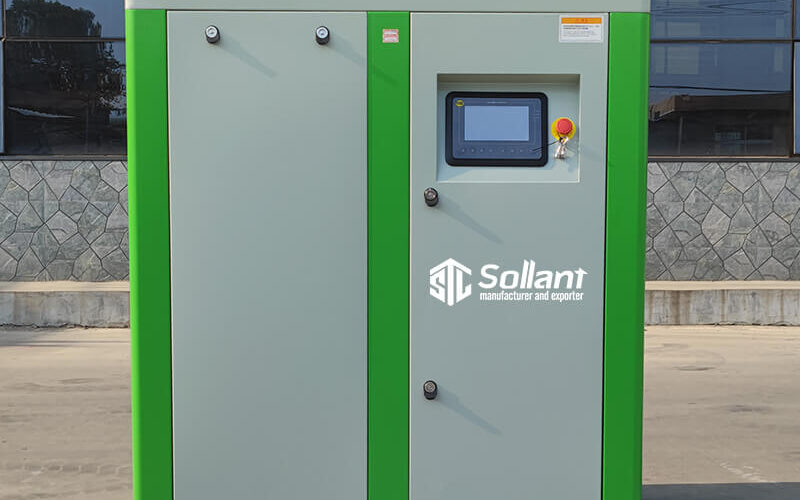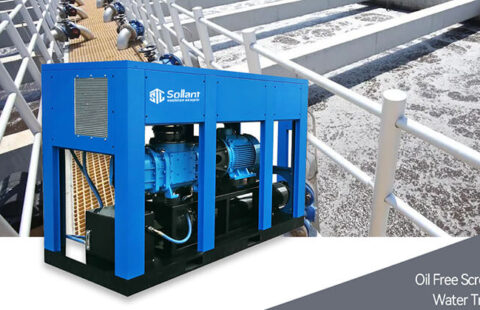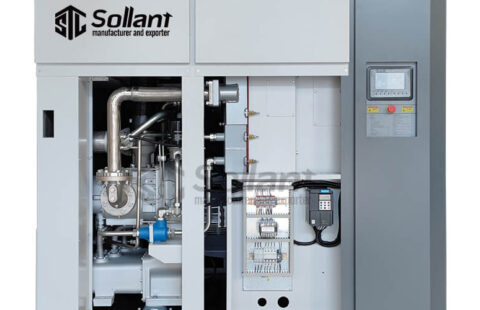
Permanent magnet variable frequency air compressor connection method
- Bolt connection
(1) When the bolts are tightened, adjustable wrenches shall not be used, and more than one same washer shall not be used under each nut. After the countersunk screws are tightened, the nail heads shall be buried in the machine parts and shall not be exposed.
(2) Under normal circumstances, the threaded connection should have anti-loosening spring washers, and the method of tightening symmetrical multiple bolts should be gradually tightened in a symmetrical order, and the strip connector should be tightened symmetrically from the middle to both directions.
(3) After the bolts and nuts are tightened, the bolts should expose 1-2 pitches of the nuts; when the screws do not need to disassemble parts during fastening of the moving device or maintenance, the screws should be coated with thread glue before installation.
(4) For fasteners with specified tightening torque requirements, a torque wrench should be selected and tightened according to the specified tightening torque. Bolts with no specified tightening torque.
- Pin connection
(1) The end face of the positioning pin should generally be slightly higher than the surface of the part. After the taper pin with screw tail is installed in the relevant parts, its large end should sink into the hole.
(2) After the cotter pin is installed into the relevant parts, its tails should be separated by 60°-90°.
- Key connection
(1) The two sides of the keyway of the flat key and the fixed key should touch evenly, and there should be no gap between the mating surfaces.
(2) After the key (or spline) of the gap cooperation is installed, when the relative moving parts move along the axial direction, there must be no unevenness in tightness.
(3) After the hook key and wedge key are installed, the contact area should not be less than 70% of the working area, and the non-contact parts should not be concentrated in one place; the length of the exposed part should be 10%-15% of the length of the slope.
- Riveting
(1) The riveting materials and standard dimensions meet the design requirements, and the processing of the rivet holes should meet the relevant specifications.
(2) When riveting, the appearance of the riveted parts shall not be damaged, nor shall the appearance of the riveted parts be deformed.
(3) Unless there are specific requirements, there should be no looseness after riveting, and the head of the rivet should be in close contact with the riveted parts, and should be smooth and round.
- Expansion sleeve connection
Expansion sleeve installation: Apply lubricating grease to the expansion sleeve, put the expansion sleeve into the installed hub hole, insert it into the installation shaft, adjust the installation orientation, and then tighten the bolts. The order of tightening is bounded by the slit, and the left and right are interspersed and symmetrically tightened successively to ensure that the extra torque value is reached.
- Tight connection
The taper end and the hole of the set screw at the conical end should both be 90°, and the set screw should be tightened against the hole.
Sollant Focus on Energy Saving




